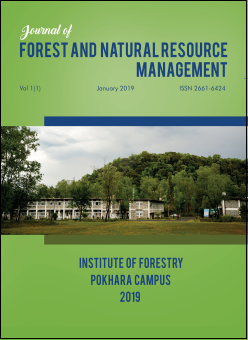Restructuring Integrated Watershed Management Models for the Federal Democratic Regime of Nepal
DOI:
https://doi.org/10.3126/jfnrm.v1i1.22654Keywords:
Fuderal, Policy, Water sustainable development, Common pool resourceAbstract
Recent political envision has redesigned the administrative units of Nepal into federal states with the aim of decentralizing the power to ensure the process of rapid sustainable development. As a consequence, all the public service agencies need to restructure their delivery units for achieving goals targeted by the newly adopted administrative regime plan. With the aim of recommending the best watershed management models for this changing context, this paper aims to review existing watershed management models applied in different continents like European union, African union and the United States where they have already adopted this watershed management plans into their federal states or countries union successfully. Although they are geographically distinct and economically advanced, the major approach adopted is a river basin approach with the clear legislative framework. This approach is highly succeeded between interstate (or between member countries) because of political or interstate commitments for the common pool resource water. Clear policies and commitments between member countries or interstate greatly improved the function of this mechanism. With the light of those experiences in the field of watershed management plan adopted in federal or union countries, river based integrated management plan balancing efforts between interstates seems best models in the world, and is also proposed for the new federal republic of Nepal.
Downloads
Downloads
Published
How to Cite
Issue
Section
License
© Institute of Forestry, Pokhara Campus




